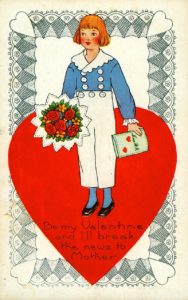Pine Mountain Settlement School
Series 09: BIOGRAPHY
Letters to a Sweetheart
Between Dot (Olive Coolidge)
and Bob (Robert Butman)
March 1942
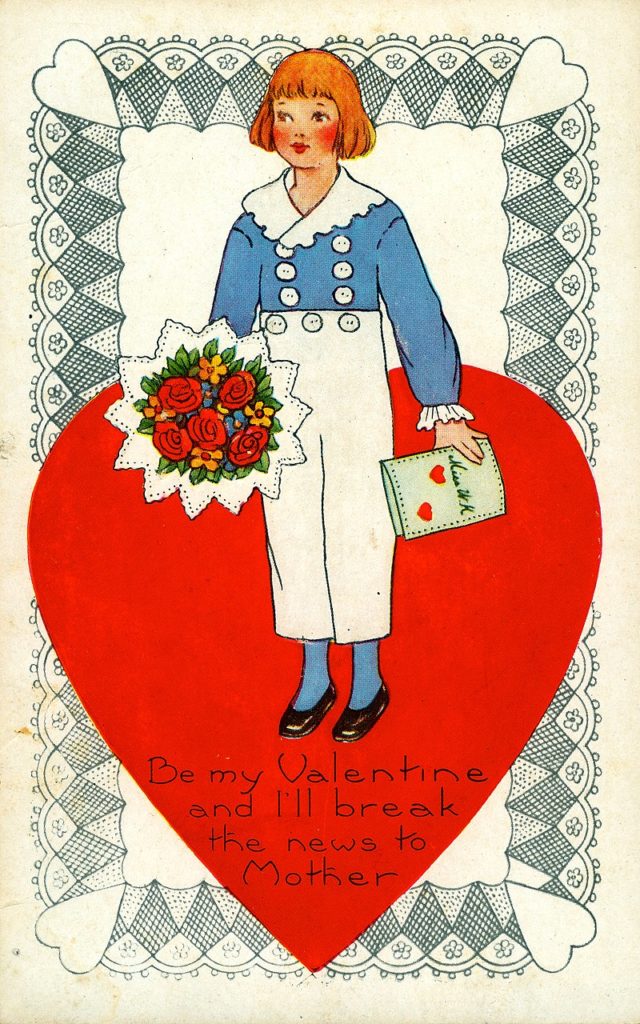
Valentine, c. 1920. Source: Chordboard [Public domain], via Wikimedia Commons
LETTERS to a Sweetheart
Excerpts from WWII-era letters between Robert Butman and Olive Coolidge (PMSS assistant nurse, 1941-1942)
Valentine’s Day — a time to express your affection for or admiration of that very special person. If you’re needing inspiration to convey your feelings, consider the following excerpts from letters written in March 1942, during World War II, when “Bob” (Robert Butman), stationed at a military base, exchanged letters with “Dot” (Olive Coolidge). Olive served as an assistant nurse at Pine Mountain Settlement School from 1941 until early 1942.
The letters were among a very large collection of correspondence, photographs, and memorabilia donated to the PMSS Collections in 2024 by Marcia Butman, the grandniece of Olive Coolidge. Work on organizing and archiving the Coolidge collection and adding much of it to the PMSS Collections website is on-going.
Always beginning his letters with “Darling,” Bob thanks Dot for the cookies, books, and clippings she has sent him. The two reminisce about past times together and look forward to marriage and a honeymoon. As evident in the excerpts below, the couple was not at a loss of sweet words for each other.
March 24, 1942 – From Dot to Bob
We had such a lot of fun in such a short time, darling — even though there weren’t any waves on the ocean — that I feel more lonesome than ever. Seems as though each time we see each other we understand each other a little better, and have just a little more fun. It doesn’t seem as though that could go on forever — but I believe in miracles.
…She also remarked that Coral Gables was a good place for a honeymoon! Just a little too far away though — for the amount of time we’ll probably have for a honeymoon. But then perhaps we can take a 2nd one sometime if the 1st isn’t long enough. Perhaps we will be on a perpetual honeymoon — hmmm?
March 29, 1942 – From Bob to Dot.
Shucks Dearie, I feel very much in a “how about a date tonight?” mood. Which Is nothing unusual because I feel that way most of the time. And even more so after getting a letter from you. Yes Darling, it must be love — says he — seeing a fireplace in front of him.
March 30, 1942 – From Bob to Dot.
How are you? That’s good–I’m fine too. Darling, you are wonderful, says he, plunging into his uppermost thoughts. Questions: How can I love you more and more every day? Answer: Perhaps I can’t –- but I do.
Right now you’re wonderful is about all I can think of to say (repetition at that) — beyond that, words fail me. Except perhaps — I love you — with all my heart — yes, you Dear. [P.S.] Does “yes, you dear” remind you of a valentines poem once written by none other than one O.D.C.?
March 31, 1942 – From Bob to Dot.
Sometimes, when I’m feeling very philosophical, I wonder what I ever did to deserve you. And no matter how much I flatter myself the answer always seems to come out the same. The answer being: “nothing, you’re just lucky Robert.”
…anyone that doesn’t melt when you smile at them is a block of granite.
Love is a wonderful thing, Dearie — though I don’t know much about it because you have all of mine.
See Also:
OLIVE COOLIDGE Staff – Biography
VALENTINES From the Past – Post

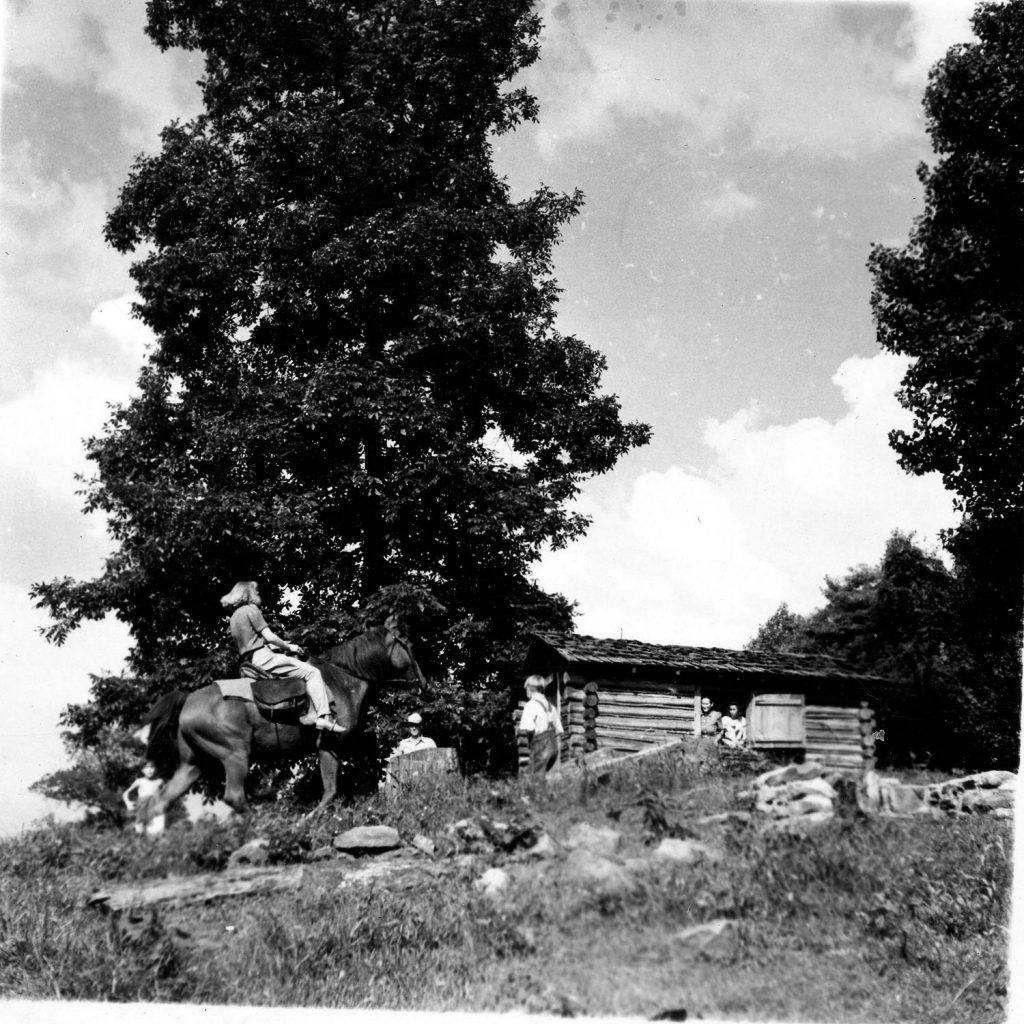
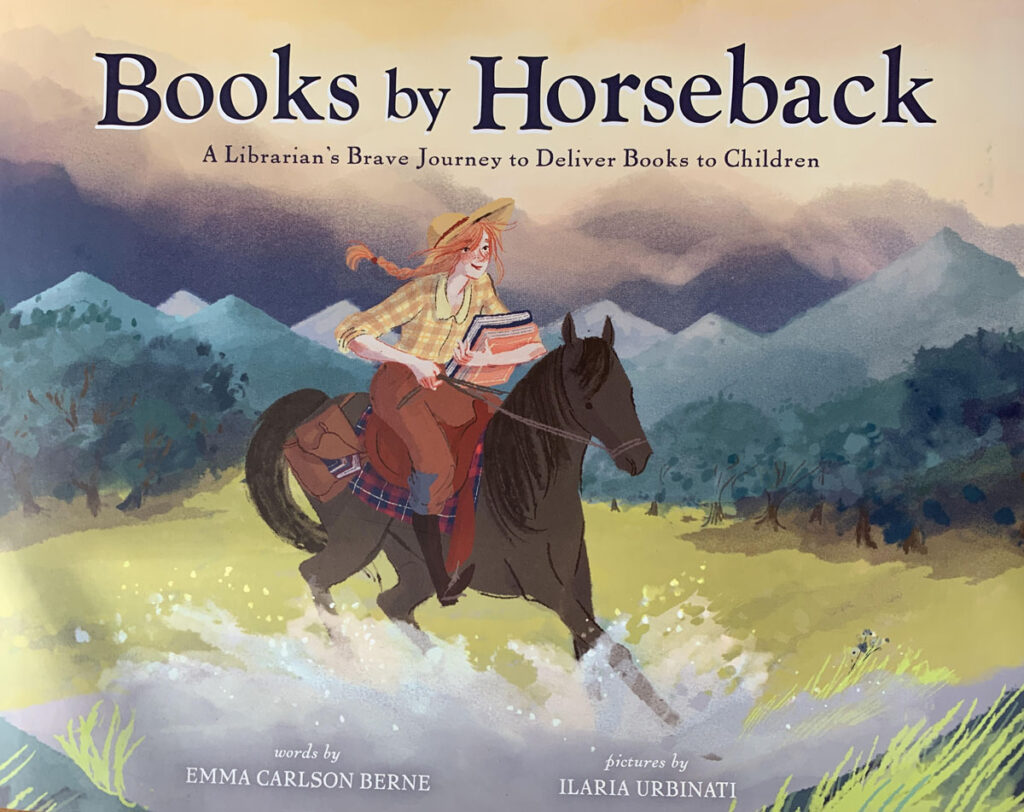
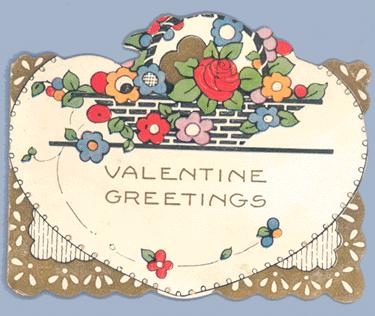
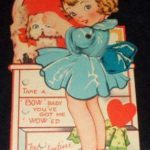
![Scan of a Valentine greeting card depicting Cupids circa 1900. By Chordboard - Self, from material in my possession. Public Domain.[https://commons.wikimedia.org/w/index.php?curid=4310719]](https://pinemountainsettlement.net/wp-content/uploads/2019/02/pmss_valentine_wiki_cupids.jpg)
